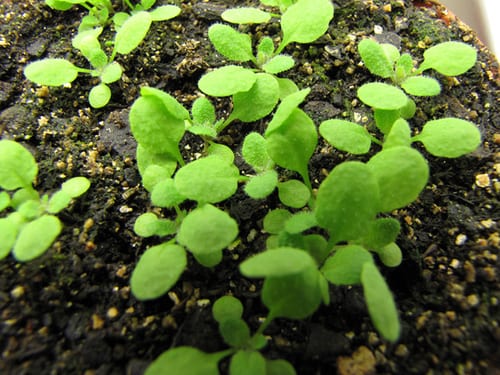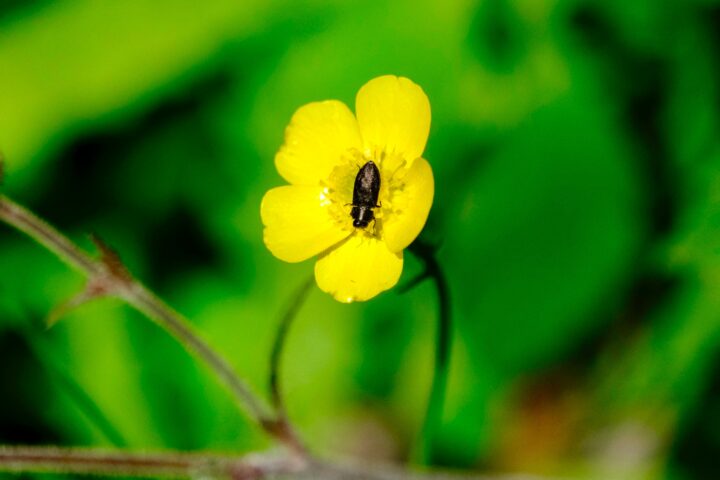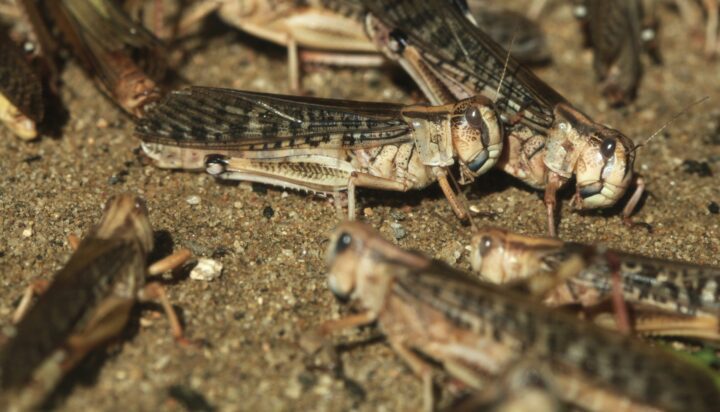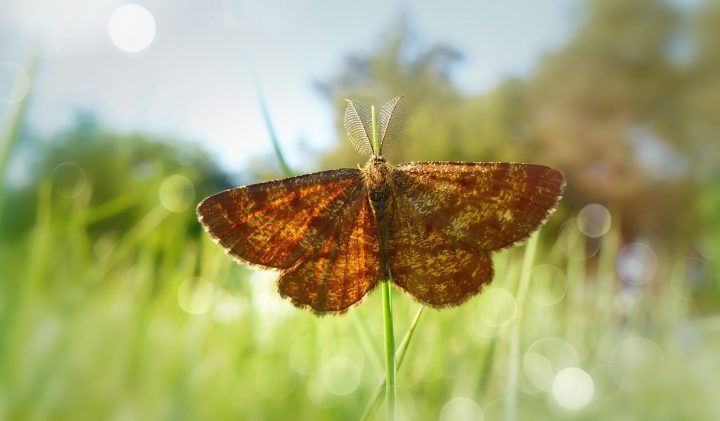Respond to Signals
To interact with its environment, a living system must not only sense a variety of signals, but also respond to them. To be energy- and material-efficient, those responses must be appropriate to the signal. This generally requires sensing thresholds to trigger an appropriate level of response (for example, hiding under a shrub versus running away to avoid a predator). Response strategies are tied to a specific signal and often have a response threshold, which determines how strong a signal must be to warrant expending energy to respond. One example is a plant that lives in arid regions in South Africa. Its seed capsules remain closed until rainfall triggers them to open to release the seeds. But the plant only responds to a second rainfall, thus protecting against releasing its seeds before there is enough sustained water for them to grow.
Transduce/Convert Signals
Sometimes a signal, such as sound or vibration, reaches a living system and needs to be converted into a different, usable form. This requires converting from one type of energy form to another. For example, organisms with eyes have photoreceptors at the back of the eyes that convert light into electrical pulses. These pulses travel to the brain and allows it to register color, shape, and detail.
Sense Light (Non-visible Spectrum) From the Environment
Living systems interact with each other and with their environments to gain information. Sometimes that information is in the electromagnetic spectrum. Wavelengths in the electromagnetic spectrum are also called the non-visible spectrum, because humans can’t detect them with the naked eye. These include ultraviolet (UV) light, infrared (IR) light, radio waves, and other wavelengths. Detecting within these spectra requires strategies beyond those used for visible light, so many living systems that depend on these signals have specialized organs to do so. For example, beetles that feed on burned trees have sensory organs that detect infrared radiation emitted by fires, enabling them to quickly locate a burned area.
Sense Light (Visible Spectrum) From the Environment
Living systems constantly receive signals from their environment that help them survive. Light (in the visible spectrum) can come from other living systems (such as fireflies) or from non-living sources (such as the sun). Survival often depends on sensing and responding to challenges like low light conditions or light that has been altered in some way. Because basic survival is at stake, living systems must excel at meeting those challenges. A well-known phenomenon is how water bends light. A stork trying to catch a fish underwater can compensate for this bending effect so that when it strikes at the fish, it has a good chance of catching it.
Adapt Phenotype
Living systems evolve over time in response to selective pressures. Selective pressures are environmental factors that reduce the reproductive success of some individuals in a population. Genetic makeup (genotype) is one way in which living systems mitigate selective pressures, but another is adaptable phenotypes. A phenotype is an observable characteristic that can be thought of as the expression of the genotype, combined with modifications caused by the environment or developmental conditions. Individuals, populations, or ecosystems that have phenotypes capable of reducing the effects of selective pressures can survive. Some plants, for example, modify their leaf shape in response to changing environmental conditions. A single olive tree has variable leaf shapes on sunny compared to shady areas of the tree, yet the next year, those same buds may develop differently shaped leaves.





